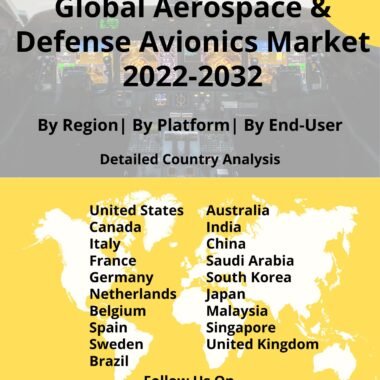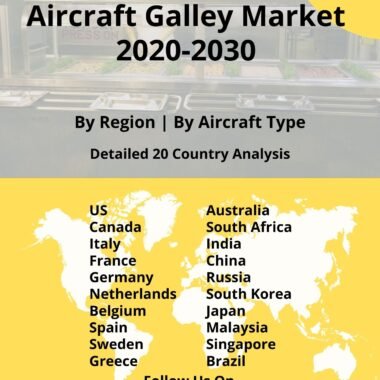Description
Commercial Aircraft MRO Market
Frequently Asked Questions of Commercial Aircraft Maintenance, Repair, and Overhaul Market
Aircraft MRO stands for maintenance, repair, and overhaul. This connotation covers the aftermarket expenditure incurred within the aviation industry. Services ranging from retrofitting, component replacement, and maintenance activities related to the design of aircraft are a part of this market. The expanding aftermarket trends for the aviation sector are one of the key factors that drive the MRO segment. The increasing emphasis on safety protocols to be followed during the flight is expected to be one of the key parameters that drive the growth dynamics for the MRO vertical.
Any establishment, workshop, or hangar that professionally engages in and conducts airplane maintenance is referred to as an MRO facility. MRO facilities and technicians employ aviation ground support equipment to maintain aircraft operating safely and dependably.
Major factors driving Commercial Aircraft MRO Market Growth
As of 2019, the propensity to travel via air for a passenger was noted to be once in 21 months. This value has rapidly increased in the past decade owing to the rising disposable income of the population. The increasing purchasing power of the middle-class population is another factor that contributes to the growth of the commercial aviation domain. As the market for commercial aviation expands, the opportunities for the MRO sector also increase since it stands to gain more business.
Trends influencing the Commercial Aircraft MRO Market Size
The barriers to entry within the commercial Aircraft MRO market are noted to be very high owing to the high capital intensity as well as the accuracy of operations required. An MRO requires significant financial investment and takes a long time to become profitable. The correct staff, frequently trained, and efficiently utilized with a strong focus on quality and turnaround time is essential to running a reputable MRO. Thus the entry of new players within this market is curtailed owing to the nature of this market, which is both highly competitive as well as niche.
In addition to certification from the local regulator, it also needs ongoing investment in tooling and certification from international OEMs like Airbus, Bell Helicopter, Boeing, Bombardier Aerospace, Dassault Aviation, Gulfstream Aerospace, Honeywell, and others in addition to certification from safety regulators like the Federal Aviation Administration (FAA) and the European Aviation Safety Agency (EASA) thus further raising the barriers to entry within the mentioned market segment.
Commercial Aircraft MRO Market Forecast & Dynamics
To study the overall market for MRO, the vertical has been segmented by Type and by Region. The regional competitive landscape provides a purview of the market within North America, Europe, APAC, the Middle East, and the RoW. The Type segment includes Electrical MRO, Facility MRO, as well as Industrial MRO. The MRO segment can be further bifurcated based on the system into Hardware and Software. The software segment is poised to gain momentum owing to the inclusion of automation-based technologies, growing digitalization, as well as upgrade of legacy Management Integration Systems.
In terms of hardware, one of the key technological advances which are poised to support the MRO market is 3D Printing. The technology is used for the production of aircraft components via the use of metal and non-metallic compounds. Large Scale Additive Manufacturing is another technology that has gained rampant momentum within the OEM and aftermarket verticals for the aviation domain. This technology is used for the mass fabrication of aircraft components.
In terms of the Systemic segment of the MRO vertical, the software market is expected to be the fastest-growing vertical owing to an increased investment within this domain. The integration of ICT-based technologies like IoT and Artificial Intelligence is anticipated to steadfast the growth associated with this market. The adoption of wearables and robotics is another derivative of IoT within the MRO vertical. The use of technologies to monitor the present structural frame of an aircraft is expected to drive efficiency and safety within the MRO segment.
Commercial Aircraft MRO Market Analysis for Recent Developments
The growing economy associated with developing nations is poised to be one of the key drivers for the commercial aircraft MRO market. The growing commercial aviation sector for countries like India is poised to accelerate the growth of the commercial aircraft MRO market. The second-highest expense for airlines in India after fuel is maintenance, which accounts for 13–15 percent of their sales. The majority of the time, airlines do on-tarmac inspections (A and B checks) in-house and contract with external MROs for significant maintenance on engines (C and D checks) and modifications.
Pilatus has entered an agreement with Aero Centers Epps to acquire the authorized Pilatus sales and service center at Atlanta’s Dekalb-Peachtree Airport (PDK). Aero Centers Epps has been a licensed Pilatus sales and service center serving the Southeast United States since 1996. In 2022, SAR Trilogy Management (SAR-T) acquired the company. To “better focus on its FBO, non-Pilatus maintenance and aircraft management and charter business,” the owner of SAR-T decided to sell the maintenance, repair, and overhaul (MRO) division, according to Pilatus. Following the sale, the Pilatus Group—which will become the facility’s sole owner—will employ the roughly 40 current workers at the location. As per Pilatus, the facility will persist in offering sales activities for PC-12 and PC-24 aircraft in addition to offering “all-encompassing assistance throughout the complete lifespan of a Pilatus aircraft, encompassing maintenance, avionics, and spare parts sales.” The Product Support division of Triumph Group, a top supplier of MRO services to the international aviation aftermarket, has entered into an agreement with AAR. AAR anticipates receiving estimated tax benefits as part of the transaction, with a present value of about $80 million. The effective purchase price multiple, including the estimated tax benefits, is anticipated to be 11.7x FY2024 EBITDA and 9.9x with estimated run-rate synergies of $10 million.






